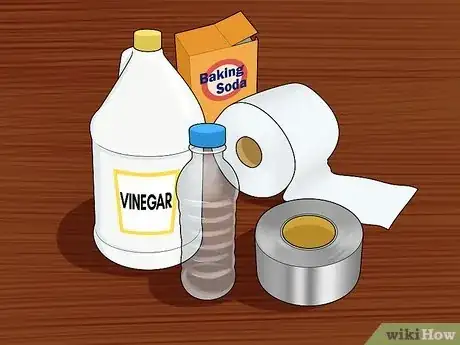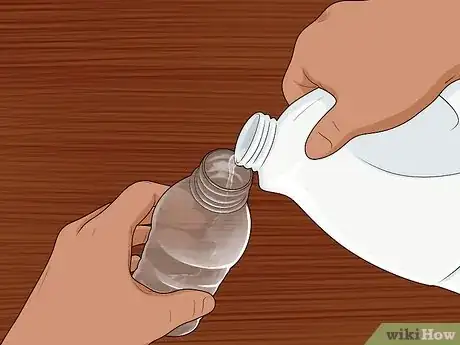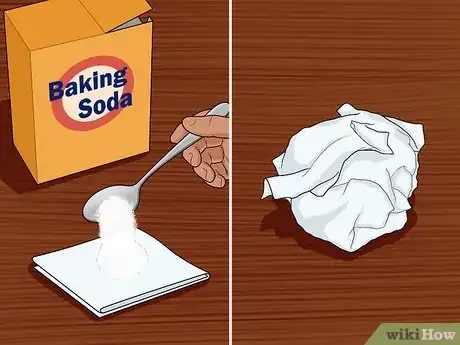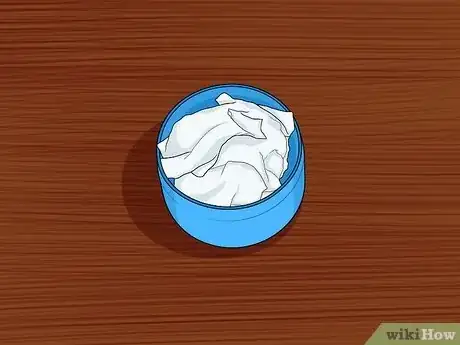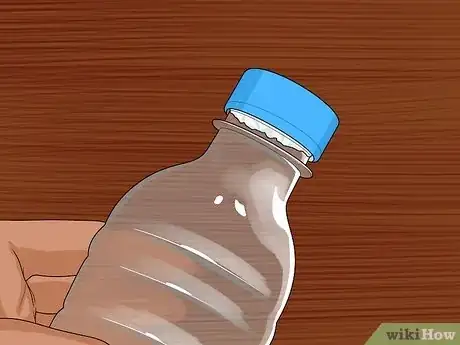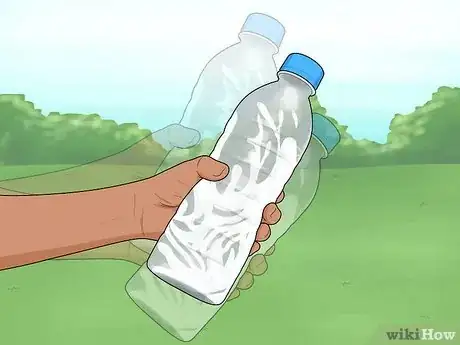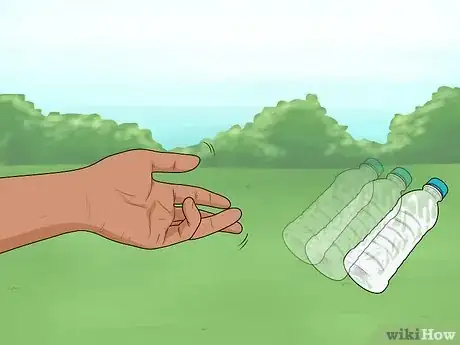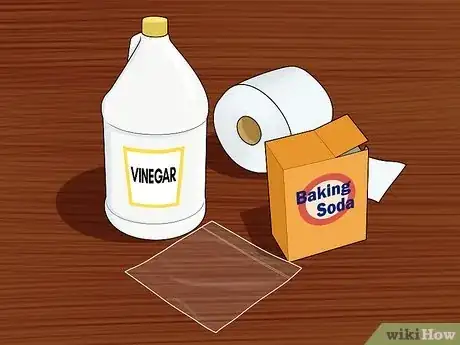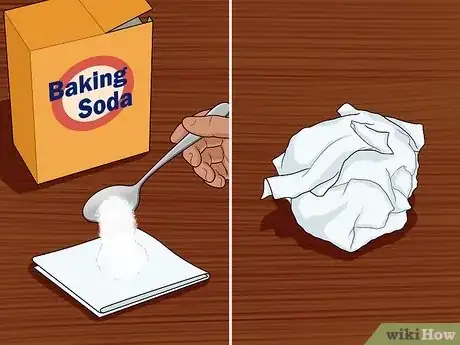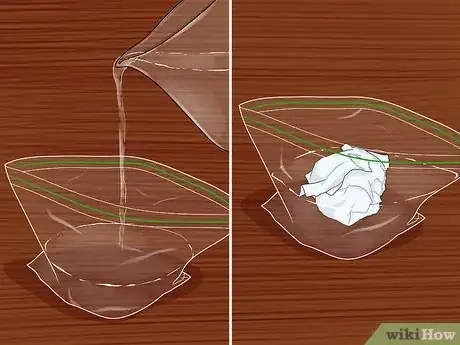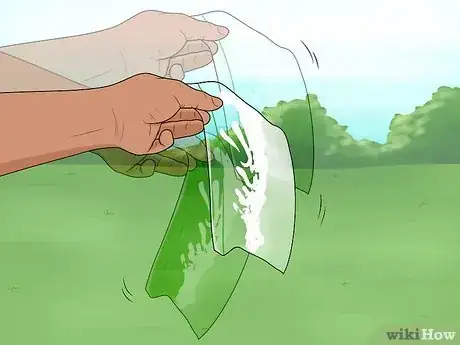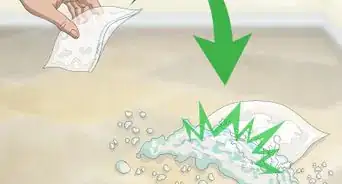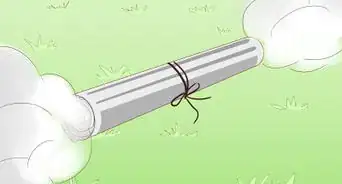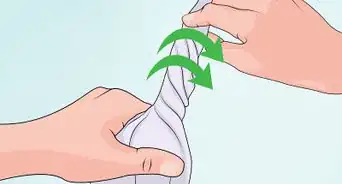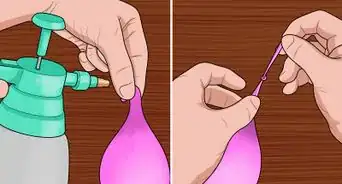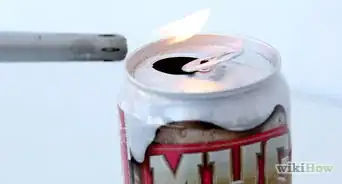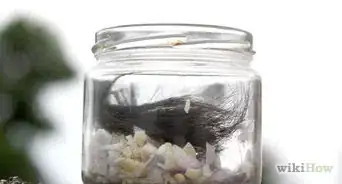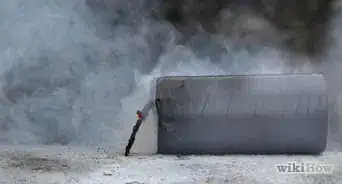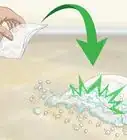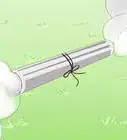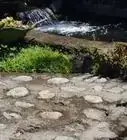This article was co-authored by wikiHow Staff. Our trained team of editors and researchers validate articles for accuracy and comprehensiveness. wikiHow's Content Management Team carefully monitors the work from our editorial staff to ensure that each article is backed by trusted research and meets our high quality standards.
This article has been viewed 145,448 times.
Learn more...
You can make a nonlethal bomb using supplies from your kitchen. Since you’re dealing with an explosion, you should always take safety precautions. Never intend to harm someone with a bomb, even if it is a vinegar based bomb. Vinegar is an acid and when it reacts with baking soda, a base, it produces carbon dioxide, which causes an explosion.[1]
Steps
Creating a Bottled Vinegar Bomb
-
1Gather your supplies. For this bomb you’ll need vinegar, baking soda, toilet paper, duct tape and a bottle. The best type of bottle is a 50 cl plastic bottle because it won’t require you to use too much vinegar. You should also plan to supervise a young child if they are going to perform this experiment.
- The best type of vinegar to use is white distilled vinegar. This is also one of the cheapest vinegars.
-
2Fill the bottle with vinegar. Open the bottle and make sure you keep the cap. Pour the vinegar into the bottle until you reach the halfway mark of the bottle. If you are using a plastic bottle that is larger than 50 cl, add about a cup of vinegar.
- You can use a funnel to safely add vinegar to the bottle without wasting any.
Advertisement -
3Wrap the baking soda. Take a square of toilet paper or a tissue and put a tablespoon of baking soda onto it. Fold or wrap the baking soda with the paper. You are wrapping the baking soda so that it doesn’t react to the vinegar immediately. The tissue paper acts as a timer for the bomb.
-
4Seal the tissue to the bottle cap. Do not use too much toilet paper or it will not dissolve into the vinegar. Do not use too much baking soda, or it will not fit onto the cap and won't be able to close. You can either seal the paper with tape or glue depending on your preference. Mount the tissue paper onto the inside of the water bottle's cap.
- Once you find a good fit for the tissue wrapped baking soda, glue it to inside of the cap.
- Take care and try not to rip the paper and spill the baking soda.
-
5Close the bottle. Carefully attach the cap to the water bottle. You’ll need to watch out for the grip of the cap and bottle. Try not to pierce the tissue paper and release the baking soda. If you are worried about this, you can alternatively tape the cap to the bottle.
-
6Shake the bottle. You need make the vinegar come into contact with the baking soda. Shake up the bottle for a few moments, or until you feel the bottle’s pressure increase. You could alternatively turn it upside down so the vinegar comes into contact with the baking soda.
- Be close to the area you want to ignite your vinegar bomb. You shouldn’t do this step until you are ready for the bomb to explode.[2]
-
7Ignite the bottle. When you think the pressure is large enough, throw it at the ground. You could also set the bottle down and wait for the chemical reaction to blast the cap off the bottle. It might be more fun to throw the bottle against the ground. Take a couple steps back. You should be at least 3-4 feet away from the bomb.
- Cement is a better surface than grass for an explosion.
- Make sure the area where you throw the bottle is clear of people. You do not want to accidentally harm someone with this experiment.
Crafting a Plastic Bag Bomb
-
1Gather the supplies. For this “bomb,” you’ll need one cup of vinegar, tissue paper, a plastic bag, and one tablespoon of baking soda. The beauty of these experiments is the ease of access to the supplies. You might also want access to a clean sink and protective eyewear.
- If you plan to do this project with a younger child, make sure that you supervise them through each portion of the process.[3]
-
2Wrap the baking soda. Lay out a small strip of tissue paper, about two squares, on a flat surface. Measure out a tablespoon of baking soda and dump it onto the paper. You can then either fold up the tissue paper or roll it up. Do whichever technique you like best. Do not wrap the baking powder too tight, or else you may create a tear in the paper.
- If you are rolling the tissue paper, make a simple fold on the tips to ensure baking soda doesn’t fall out.
-
3Fill the plastic bag. Hold the bag upright so it won’t tip over when you add the vinegar. Measure out one cup of vinegar and carefully add it into the bag. Add the tissue wrapped baking soda to the bag. Seal the bag once you add the tissue paper.
- If you are supervising a smaller child, hold the bag while they pour.
- You might notice the reaction start to take effect based on the bubbles that begin to form.
-
4Shake and detonate the “bomb.” Go to the area you want to detonate the bomb. The best place to activate the bomb is somewhere outside. You could also use your kitchen sink, but this could also cause a mess. Don’t shake the bag too much, but give it a few shakes (no longer than five seconds). Place the bomb in the spot you picked for it to explode. Take a couple of steps back.
- If you feel the bag start to expand as you shake it, set it on the floor immediately! That bag is about to explode.[4]
Community Q&A
-
QuestionHow can I explode metal and steel boxes?
 Dominic WesawCommunity AnswerYou cant use baking soda and vinegar but you can use tungsten carbonate bought at your local weapons store.
Dominic WesawCommunity AnswerYou cant use baking soda and vinegar but you can use tungsten carbonate bought at your local weapons store.
Warnings
- Do not hold the bomb in your hands for too long.⧼thumbs_response⧽
- Never conduct these experiments in a glass container.⧼thumbs_response⧽
- Wear proper safety gear.⧼thumbs_response⧽
References
- ↑ https://www.exploratorium.edu/science_explorer/bubblebomb.html
- ↑ http://www.apple-cider-vinegar-benefits.com/baking-soda-and-vinegar.html#prk
- ↑ http://www.brighthubeducation.com/science-fair-projects/127097-four-baking-soda-experiments/
- ↑ http://www.brighthubeducation.com/science-fair-projects/127097-four-baking-soda-experiments/
